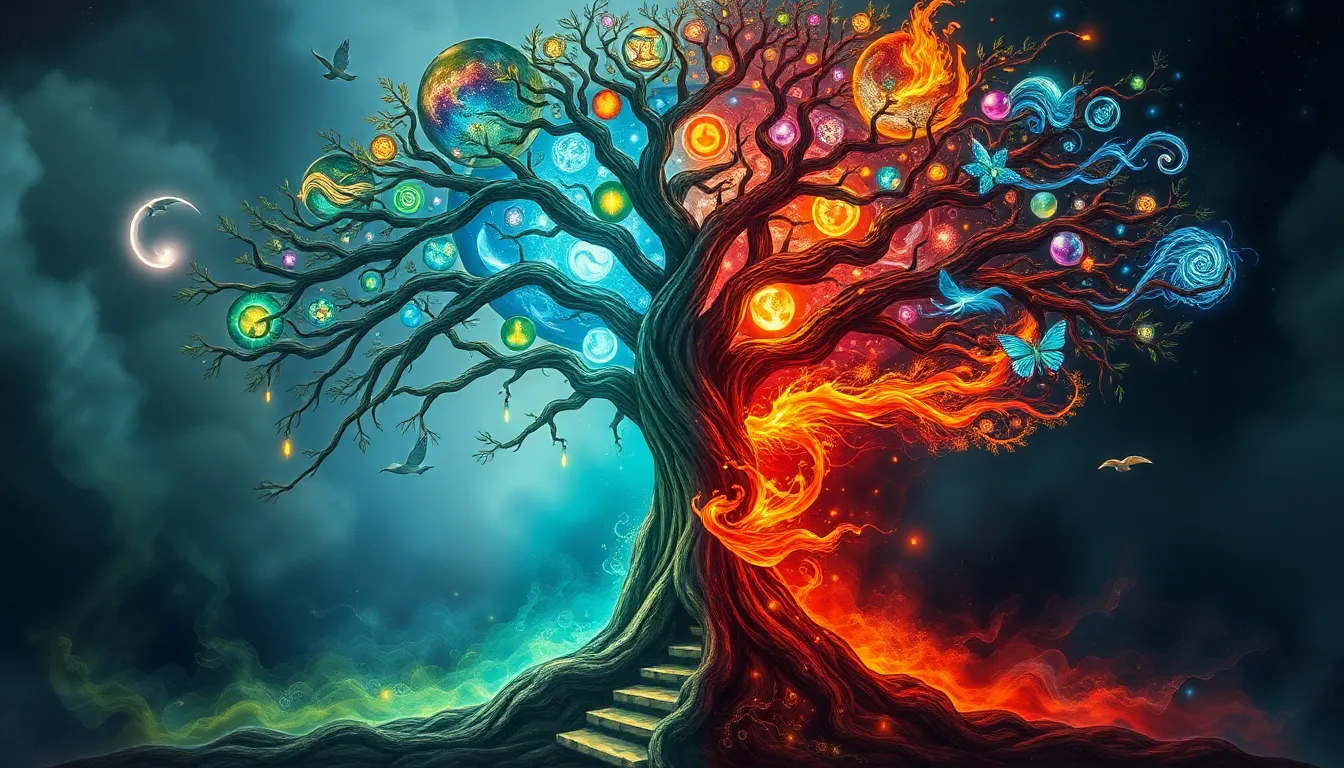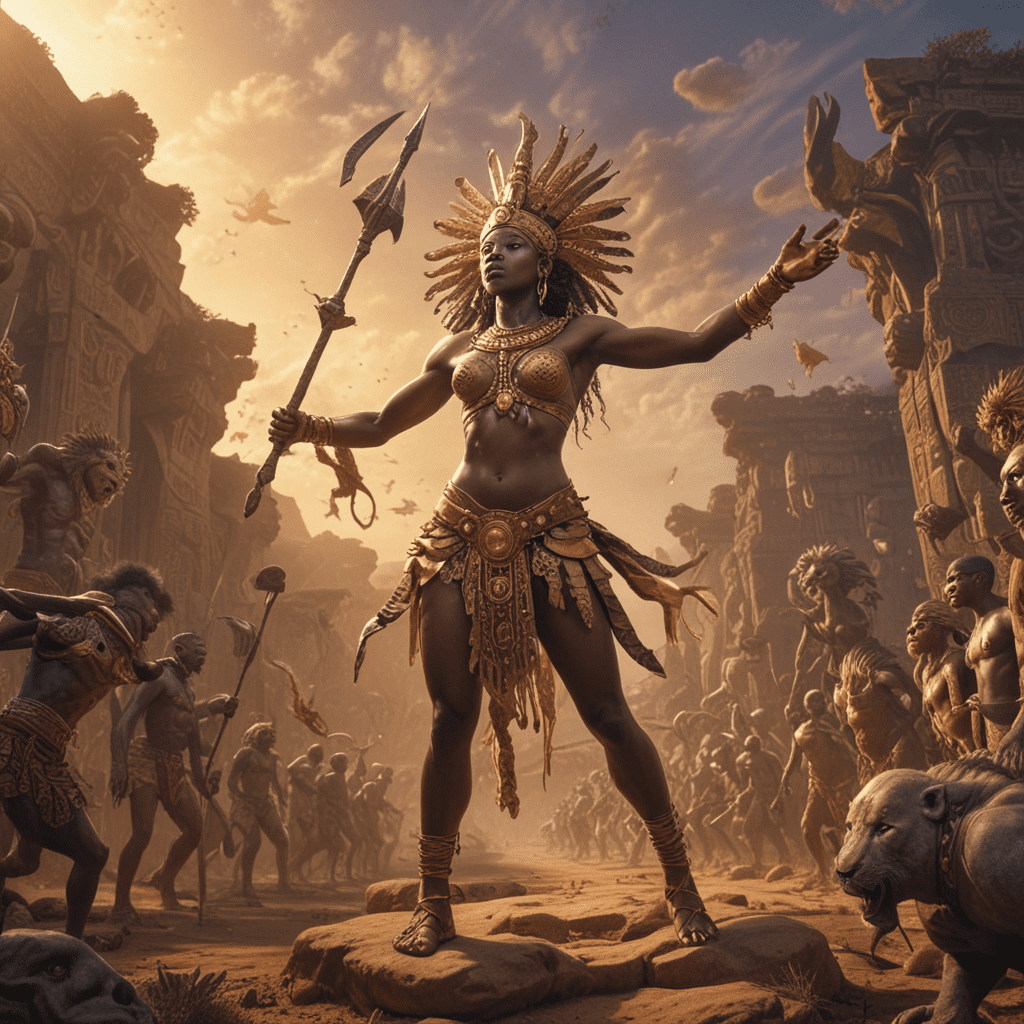The Tree of the Elements: Myths of Earth, Air, Fire, and Water
Introduction: The Significance of the Four Elements in Mythology
The four elements—earth, air, fire, and water—have long been viewed as the foundational aspects of various mythologies around the world. These elements are not just physical substances; they symbolize deeper truths about existence, creation, and the natural world. The concept of the “Tree of the Elements” serves as a metaphor for the interconnectedness of these elements, illustrating how they intertwine and influence one another within mythological narratives.
Roots of the Earth: Myths and Legends of Earth Element
Earth is often personified through deities and spirits that embody its strength and nurturing qualities. In Greek mythology, Gaia is the primordial goddess of the Earth, symbolizing fertility and the nurturing aspect of nature. Similarly, in Egyptian mythology, Geb represents the Earth and is often depicted as lying beneath the sky goddess Nut.
Throughout various cultures, earth myths frequently emphasize themes of:
- Fertility: Earth is seen as a provider of life, supporting agriculture and the growth of plants.
- Stability: The solid ground represents security and permanence.
- Underworld: Many cultures view the Earth as a gateway to the afterlife or the underworld, such as the Greek Hades.
Branches of Air: The Spirits of Wind and Sky
In mythology, air is often associated with spirits of the wind and sky, reflecting themes of freedom, movement, and knowledge. In Greek mythology, Aeolus is the Keeper of the Winds, controlling the breezes and storms. Similarly, in Japanese mythology, Fujin is the god of wind, often depicted as a fierce figure carrying a bag of winds.
The role of air in creation myths is significant, as it is often depicted as a catalyst for life and inspiration. Air symbolizes:
- Creation: The breath of life that animates beings.
- Knowledge: Air is linked to thought and communication, representing the intellect.
- Freedom: The vastness of the sky embodies the spirit of adventure and exploration.
Flames of Fire: Myths Surrounding the Element of Fire
Fire is a powerful symbol in mythology, representing both destruction and transformation. Prometheus, a titan in Greek mythology, stole fire from the gods and gave it to humanity, symbolizing enlightenment and the spark of innovation. In Hawaiian mythology, Pele is the goddess of volcanoes and fire, embodying the fierce and creative aspects of the earth.
The dual nature of fire in myths highlights its complexities:
- Destruction: Fire can consume and devastate, serving as a warning of nature’s power.
- Transformation: Fire can also cleanse and regenerate, paving the way for new growth.
- Passion: Fire is often associated with human emotions, from love to rage.
Waters of Life: The Mystique of the Water Element
Water is a vital element in mythology, representing life, fertility, and the cyclical nature of existence. Poseidon, the Greek god of the sea, controls storms and is associated with both the nurturing and destructive aspects of water. Similarly, Yam in Mesopotamian mythology is a god of the sea and chaos.
Water myths often convey rich symbolic meanings:
- Life: Water is essential for survival, often seen as a source of nourishment.
- Death: Water can also symbolize the unknown and the journey to the afterlife.
- Rebirth: Many cultures celebrate water as a purifying force, representing renewal and new beginnings.
The Interconnection of the Elements: The Tree’s Structure
The elements do not exist in isolation; their interactions create a dynamic balance within the mythology. The “Tree of the Elements” metaphor illustrates how earth, air, fire, and water influence and support one another. For instance, water nourishes the earth, which in turn provides the foundation for life that air sustains. Fire can transform the earth and water, leading to new life forms.
This interconnectedness emphasizes the importance of:
- Balance: Each element plays a critical role in maintaining ecological and spiritual harmony.
- Harmony: The coexistence of elements reflects the natural world’s complexity and interdependence.
Cultural Variations: Earth, Air, Fire, and Water in Different Mythologies
Across different cultures, the myths surrounding earth, air, fire, and water reveal both universal themes and unique interpretations. For instance:
- Indigenous Mythologies: Many Indigenous cultures view the elements as sacred and imbued with spirit, emphasizing respect and stewardship.
- Greek Mythology: The four elements are often personified and included in tales of gods and heroes.
- Hindu Mythology: The elements are part of the Pancha Mahabhuta, representing the building blocks of the universe.
These variations highlight how different cultures interpret the same elements within their unique worldviews.
Modern Interpretations: The Elements in Contemporary Storytelling
The influence of elemental myths continues in modern literature, film, and art. Stories often draw from the symbolism of the elements to explore themes of conflict, identity, and the human condition. Examples include:
- Literature: Books like “The Earthsea Cycle” by Ursula K. Le Guin delve into elemental magic and its implications.
- Film: Movies like “Avatar” showcase elemental themes in the context of ecological and spiritual harmony.
- Art: Contemporary artists incorporate elemental motifs to comment on environmental issues.
The resurgence of these themes in popular culture underscores their relevance in today’s society.
Environmental Reflections: Myths and Ecological Awareness
Elemental myths can significantly shape our understanding of nature and ecology. They often convey messages about the importance of respecting and protecting the natural world. By fostering a connection to nature through mythology, we can cultivate a deeper appreciation for our environment.
Myths encourage us to reflect on:
- Stewardship: The responsibility to care for the earth and its resources.
- Interconnectedness: Recognizing the links between human actions and environmental health.
- Respect for Nature: Valuing the wisdom contained in traditional ecological knowledge.
Conclusion: Embracing the Wisdom of the Tree of the Elements
In exploring the myths of earth, air, fire, and water, we uncover profound insights into the human experience and our relationship with the natural world. The “Tree of the Elements” serves as a reminder of the interconnectedness of all things, urging us to seek balance and harmony within ourselves and our environment. By embracing the wisdom of these elemental myths, we can foster a deeper understanding of our place in the universe and our responsibility to protect it for future generations.



